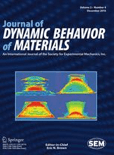
Journal of Dynamic Behavior of Materials
Scope & Guideline
Connecting Scholars to the Future of Material Dynamics
Introduction
Aims and Scopes
- Dynamic Mechanical Behavior:
Research on how materials respond to dynamic loading conditions, including high strain rates and impacts, is a core focus. Studies often involve characterizing mechanical properties under conditions such as shock, tension, and compression. - Material Characterization Techniques:
The journal emphasizes advanced characterization methods, including dynamic X-ray diffraction, photonic Doppler velocimetry, and various forms of experimental impact testing to elucidate material responses. - Computational Modeling and Simulation:
A significant scope includes the development and application of computational models, such as finite element analysis and discrete element methods, to predict material behavior under dynamic conditions. - Additive Manufacturing and Novel Materials:
The journal explores the mechanical behavior of materials produced via additive manufacturing processes, focusing on their dynamic properties and performance under stress. - Impact and Ballistic Performance Studies:
Research on the impact resistance and ballistic performance of various materials, including metals, polymers, and composites, is a prominent area, contributing to advancements in protective materials and structures. - Interdisciplinary Approaches:
The journal fosters interdisciplinary research, integrating principles from materials science, mechanical engineering, and applied physics to address complex material behavior challenges.
Trending and Emerging
- Machine Learning Applications:
The integration of machine learning techniques in predicting material behavior and optimizing material properties is emerging as a significant trend, showcasing the journal's commitment to incorporating advanced analytical tools. - Additive Manufacturing Innovations:
There is a growing emphasis on the dynamic behavior of additively manufactured materials, reflecting the increasing relevance of these processes in modern material applications. - Dynamic Fracture Mechanics:
Research focusing on the kinetics of dynamic fracture and failure mechanisms is gaining traction, as understanding these processes is crucial for developing more resilient materials. - High-Pressure Material Behavior:
Emerging studies on material responses under extreme pressures and conditions are becoming more prevalent, indicating a trend towards exploring the limits of material performance. - Interfacial and Composite Material Studies:
Investigations into the interactions and performance of composite materials and their interfaces under dynamic loading are on the rise, highlighting the complexity of material behavior in multi-phase systems.
Declining or Waning
- Static Mechanical Properties:
There has been a noticeable decrease in studies focusing solely on static mechanical properties of materials, as the field shifts more towards dynamic and high-rate loading scenarios. - Low-Velocity Impact Studies:
Research specifically centered on low-velocity impacts appears to be waning, with a greater emphasis now placed on high-strain and dynamic loading conditions. - Conventional Material Testing Methods:
Traditional testing methods that do not incorporate dynamic considerations are becoming less common in favor of more sophisticated and relevant dynamic testing methodologies. - Basic Material Science:
Research that focuses purely on fundamental material science without a direct application to dynamic behavior or impact resistance has seen reduced publication frequency.
Similar Journals
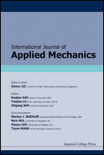
International Journal of Applied Mechanics
Pioneering Research for a Dynamic Engineering LandscapeThe International Journal of Applied Mechanics, published by World Scientific Publishing Co Pte Ltd, is a premier platform that serves the fields of materials science, mechanical engineering, and mechanics of materials. Located in Singapore, this journal has established itself as a crucial resource for researchers, professionals, and students, with its convergence of scholarly work from 2009 to 2024. Ranked in the Q2 category across notable disciplines, including Materials Science, Mechanical Engineering, and Mechanics of Materials, it reflects a strong commitment to publishing high-quality research that pushes the boundaries of knowledge in applied mechanics. Despite being a non-open access journal, its successful Scopus rankings, including an impressive rank of #151 in Mechanical Engineering, signify its substantial impact and recognition within the academic community. This journal not only aims to disseminate pioneering research but also to foster collaboration and innovation in the rapidly evolving landscape of applied mechanics.
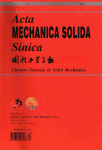
ACTA MECHANICA SOLIDA SINICA
Pioneering Insights in Computational and Mechanical EngineeringACTA MECHANICA SOLIDA SINICA is a prestigious journal published by Springer, dedicated to advancing research in the fields of Computational Mechanics, Mechanical Engineering, and Mechanics of Materials. Since its inception in 1981, the journal has established a significant presence in the academic community, holding a commendable Q2 ranking across its categories as of 2023. Furthermore, it is recognized for its impactful contributions, with Scopus rankings placing it in the top quartiles, fostering essential discourse among professionals and researchers in the engineering domain. While it operates under a traditional access model, ACTA MECHANICA SOLIDA SINICA continues to provide valuable insights and developments, making it an essential resource for those seeking to deepen their understanding of solid mechanics and related disciplines. The journal remains an influential platform for innovative theoretical and experimental studies, reinforcing its status in the global academic landscape.
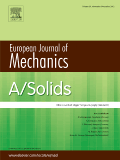
EUROPEAN JOURNAL OF MECHANICS A-SOLIDS
Shaping the Future of Mechanical EngineeringThe EUROPEAN JOURNAL OF MECHANICS A-SOLIDS, published by ELSEVIER and based in the Netherlands, stands as a premier outlet for research in the field of solid mechanics. With an impressive track record since its inception, the journal has been indexed in prestigious categories including Materials Science, Mechanical Engineering, and Mathematical Physics, achieving Q1 quartile status across these domains in 2023. This recognition underscores the journal's impact, with Scopus rankings placing it in the top echelon of its respective fields, such as #39 in General Physics and Astronomy and #116 in Mechanical Engineering, demonstrating its significance and wide-reaching influence in the academic community. Scientists, engineers, and researchers are encouraged to submit their cutting-edge findings in areas related to solid mechanics, contributing to the journal's mission of advancing knowledge and innovation in this vital discipline. The journal's comprehensive scope allows for interdisciplinary engagement, making it an essential resource for professionals and students alike seeking to explore the latest developments in mechanics of materials and related areas.
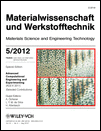
MATERIALWISSENSCHAFT UND WERKSTOFFTECHNIK
Innovating Tomorrow's Materials Today.MATERIALWISSENSCHAFT UND WERKSTOFFTECHNIK, published by WILEY-V C H VERLAG GMBH, is a prominent journal dedicated to the field of materials science and engineering. With its ISSN 0933-5137 and E-ISSN 1521-4052, this journal serves as a vital resource for researchers and professionals engaged in exploring the intricate relationships between the properties of materials and their applications. Established in 1970 and continuing through 2024, the journal has been consistently recognized in various categories, achieving a Q3 ranking in 2023 across Condensed Matter Physics, Materials Science (miscellaneous), Mechanical Engineering, and Mechanics of Materials. Although it does not offer open access, its high-quality peer-reviewed content is fundamental to the advancement of knowledge within its three key areas: novel material development, material characterization, and application of materials in engineering contexts. As a driving force in the scientific community, MATERIALWISSENSCHAFT UND WERKSTOFFTECHNIK continues to cater to the curiosity of aspiring students, seasoned professionals, and researchers alike, facilitating a deeper understanding of the complexities of material technology.

STRENGTH OF MATERIALS
Advancing the frontiers of material strength research.STRENGTH OF MATERIALS is a prestigious journal published by SPRINGER that focuses on the critical field of mechanics of materials, providing an authoritative platform for the dissemination of research and developments in material strength analysis since 1969. With an ISSN of 0039-2316 and an E-ISSN of 1573-9325, this journal serves a global audience of researchers, professionals, and students, contributing essential insights into the physical properties and performance characteristics of various materials under stress and strain. As part of the United States' academic literature, it showcases work that not only advances theoretical knowledge but also applies to practical engineering scenarios. Although ranked in the Q4 tier with respect to its category in Mechanics of Materials, with a Scopus rank of #319 out of 398 (19th percentile), it remains an important resource for those looking to expand their understanding in this specialized area. Researchers can access a wealth of information through this journal, fostering continued innovation and interdisciplinary collaboration.
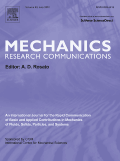
MECHANICS RESEARCH COMMUNICATIONS
Transforming Ideas into Engineering BreakthroughsMECHANICS RESEARCH COMMUNICATIONS, published by PERGAMON-ELSEVIER SCIENCE LTD, is a prestigious journal in the fields of Civil and Structural Engineering, Condensed Matter Physics, Materials Science, and Mechanical Engineering. With an ISSN of 0093-6413 and E-ISSN of 1873-3972, it has made significant contributions to the understanding and advancement of mechanics and materials since its inception in 1974. The journal is well-regarded in academia, holding a Q2 ranking across multiple categories as of 2023, and ranking in the 65th percentile for Mechanical Engineering. Researchers and professionals benefit from its peer-reviewed content, which includes a wide range of articles from fundamental research to applied technological developments. Although currently not an open access journal, it remains a vital resource for those focused on innovating within the engineering and materials science domains. With its established legacy, MECHANICS RESEARCH COMMUNICATIONS continues to shape the discourse in mechanics and engineering, making it essential reading for students and practitioners alike.

Computational Particle Mechanics
Innovating Through Particle-Based SimulationsComputational Particle Mechanics, published by SPRINGER INTERNATIONAL PUBLISHING AG, is a leading journal dedicated to advancing knowledge in the interdisciplinary fields of computational mechanics, civil engineering, and fluid dynamics. With an impressive impact factor reflecting its high-quality research publications, this journal maintains a strong presence in the academic community with a Q1 ranking in categories such as Civil and Structural Engineering, Computational Mechanics, and Numerical Analysis as per the latest 2023 evaluations. Researchers and professionals benefit from the journal's commitment to open-access options, promoting wider dissemination of groundbreaking studies. Operating under the Swiss publishing house since 2014, Computational Particle Mechanics aims to foster innovation through the exploration of particle-based methods and simulations, making significant contributions to methodologies within computational mathematics and modeling. As the journal continues to evolve until its converged years end in 2024, it stands as a vital resource for those looking to enhance their expertise in dynamic modeling and simulation techniques.
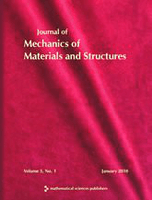
Journal of Mechanics of Materials and Structures
Exploring the Dynamics of Mechanics and Material Integrity.Journal of Mechanics of Materials and Structures, published by Mathematical Science Publishers, is a distinguished periodical in the field of Applied Mathematics and Mechanics of Materials. With the ISSN 1559-3959, this journal has been a pivotal platform since its inception in 2006, providing insights and advancements in the mechanics of materials and their structural applications. Operating out of the University of California, Berkeley, this journal not only boasts a respectable standing within its categories, ranking Q4 in Applied Mathematics and Q3 in Mechanics of Materials as of 2023, but it also serves a crucial role in fostering academic discourse among researchers, practitioners, and students alike. Although it does not currently offer open access, its contributions to the respective fields are invaluable, underscoring the relevance and importance of continued research in understanding material behavior and structural integrity. Whether investigating theoretical frameworks or engineering applications, the Journal of Mechanics of Materials and Structures remains an essential resource for anyone dedicated to the advancement of the science of materials and structures.

Journal of Computational Applied Mechanics
Bridging Theory and Practice in Mechanical EngineeringJournal of Computational Applied Mechanics, published by UNIV TEHRAN, DANISHGAH-I TIHRAN, is an influential open-access journal that has been disseminating significant research findings since its inception in 2012. With a dedicated focus on the fields of Computational Mechanics, Mechanical Engineering, and Mechanics of Materials, this journal has garnered a Q3 ranking in multiple relevant categories as of 2023, indicating its burgeoning impact within the academic community. Although precise HIndex scores are currently unavailable, the journal's recognition is underscored by its Scopus rankings, placing it in the middle tier among its peers. The journal invites researchers, professionals, and students to contribute to and engage with the continually evolving discourse in applied mechanics, fostering innovation through the dissemination of quality research. As an open-access journal, it ensures that findings are readily accessible to a global audience, thereby enhancing collaboration and knowledge sharing in the scientific community.

INTERNATIONAL JOURNAL OF IMPACT ENGINEERING
Pioneering advancements in applied sciences.Welcome to the International Journal of Impact Engineering, a premier publication dedicated to advancing the field of engineering and applied sciences, with a particular focus on impact phenomena across various sectors including aerospace, automotive, civil and structural engineering, mechanical engineering, and more. Published by Pergamon-Elsevier Science Ltd in the United Kingdom, this journal has garnered a prestigious Q1 category ranking in multiple engineering disciplines as of 2023, underscoring its significant contribution to both academic and industrial research. With an ISSN of 0734-743X and E-ISSN 1879-3509, the journal promotes rigorous peer-reviewed articles that address both theoretical and experimental aspects of impact engineering. Spanning from 1983 to 2025, it serves as a vital resource for researchers, professionals, and students aiming to explore innovative solutions and cutting-edge developments in their respective fields. The International Journal of Impact Engineering remains committed to disseminating high-quality research that drives progress towards safer and more efficient engineering practices.